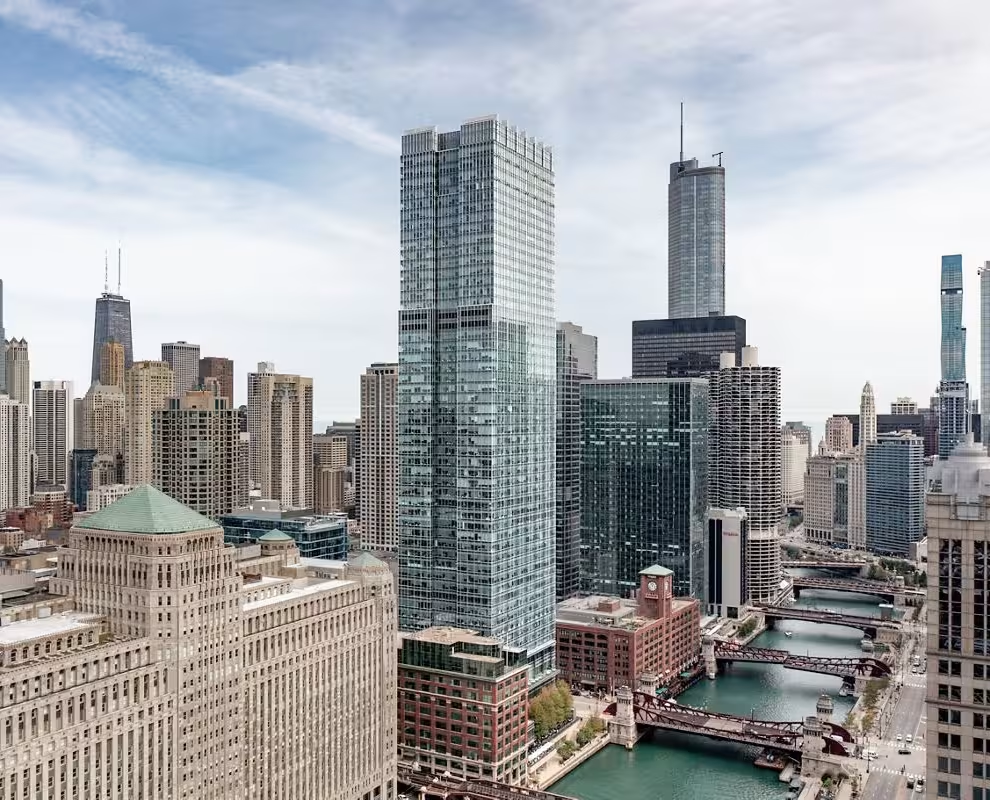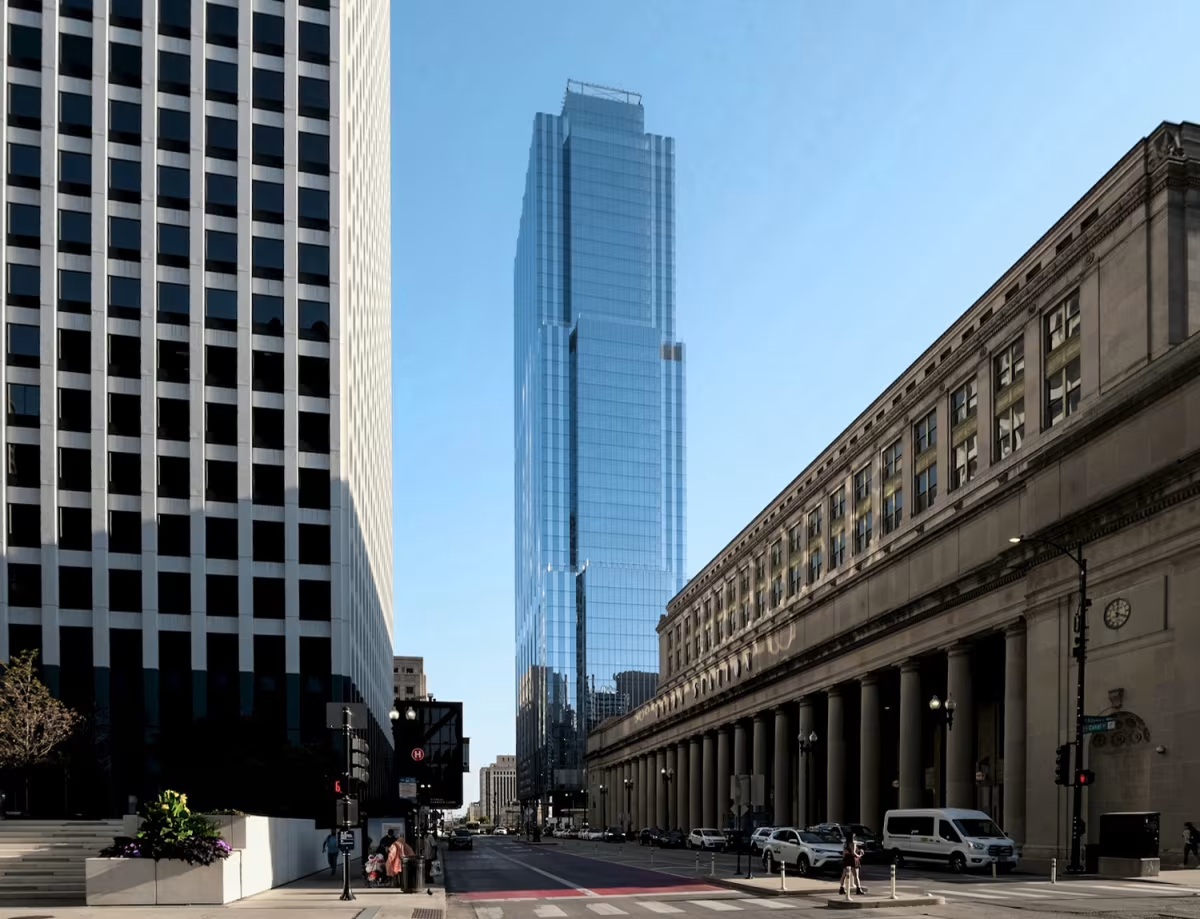300 North LaSalle Building vs BMO Tower


Comparing the 300 North LaSalle Building and the BMO Tower is interesting because they both rise in Chicago, IL, yet they were conceived by two different design teams, Pickard Chilton and Goettsch Partners , and were completed at different points in time. They were finished more than a decade apart.
This contrast within the same city allows us to see how different creative minds interpreted the evolving needs of Chicago across time.
Let's take a closer look!
Height & Size
The 300 North LaSalle Building is clearly the larger tower of the two, both in terms of height and number of floors. It rises to 784ft (239m) with 57 floors above ground, while the BMO Tower reaches 728ft (222m) with 51 floors above ground.
Of course, each project may have faced different briefs or regulatory constraints, which we don't really know about and could also explain the outcome.
Architectural Style
Both the 300 North LaSalle Building and the BMO Tower were designed in line with the aesthetic conventions of the Contemporary style.
At the time, this style was at the height of its popularity. So both Pickard Chilton and Goettsch Partners followed what was in many ways expected of them, producing designs that fit comfortably within contemporary architectural norms, rather than breaking with convention.
Uses
Both the 300 North LaSalle Building and the BMO Tower were designed to serve as commercial towers, and that has remained their main use since their completion, serving similar roles in the urban fabric.
Both towers provide significant parking capacity, with 300 North LaSalle Building offering 225 spaces and the BMO Tower offering 324.
Structure & Facade
The two towers rely on different structural systems, reflecting distinct engineering strategies.
The 300 North LaSalle Building uses a Framed Tube In Tube structural system, which combines a strong central core with a perimeter tube of columns, while the BMO Tower uses a Frame system, that relies on a regular grid of columns and beams to sustain its weight.
Yet, when it comes to their facade, they both employed the same solution, a Curtain Wall facade.
A curtain wall is a non-load-bearing facade hung from the structural frame. It is anchored to floor slabs and transfers only its own weight and wind loads, allowing for sleek, glassy exteriors.
| 300 North LaSalle Building | BMO Tower | |
|---|---|---|
| Pickard Chilton | Architect | Goettsch Partners |
| 2006 | Construction Started | 2019 |
| 2008 | Year Completed | 2021 |
| Contemporary | Architectural Style | Contemporary |
| Commercial | Current Use | Commercial |
| 57 | Floors Above Ground | 51 |
| 3 | Floors Below Ground | 2 |
| 239 m | Height (m) | 222 m |
| 120,800 m² | Usable Area (m²) | 140,000 m² |
| Framed Tube In Tube | Structure Type | Frame |
| Steel | Vertical Structure Material | Concrete And Steel |
| Concrete | Horizontal Structure Material | Poured Concrete Over Metal Decking |
| No | Facade Structural? | No |
| Glass, Steel | Main Facade Material | Glass, Steel |
| Clark Construction | Main Contractor | Clark Construction |
| Hines | Developer | Riverside Investment & Development |
| Wolff Landscape Architecture | Landscape Architect | Wolff Landscape Architecture |
| KONE | Elevator Company | Kone |
| Alvine Engineering | MEP Engineer | Environmental Systems Design, Inc. |
| Magnusson Klemencic Associates | Structural Engineer | Magnusson Klemencic Associates |
| IL | State | IL |
| Chicago | City | Chicago |
| 300 North LaSalle | Address | 320 South Canal Street |